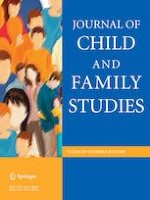11-10-2019 | Original Paper
Time-Varying Outcomes Associated With Maternal Age at First Birth
Gepubliceerd in: Journal of Child and Family Studies | Uitgave 6/2020
Log in om toegang te krijgenAbstract
Objectives
The operational definition of early motherhood remains equivocal across the literature. In response to the tendency of using age at first birth as a categorical predictor in previous research, the time-varying relationship between maternal age at first birth and socioeconomic and parenting/home outcomes was examined using longitudinal data.
Methods
Time-varying effect models were employed to examine educational attainment, home/parenting quality scores, and annual income as a function of age at first birth, controlling for race/ethnicity and presence of the father in the household during child ages 6–9.
Results
Peak scores for outcomes were observed around maternal age 30 in all three models. Parenting/home quality improved with maternal age at first birth until mothers reached the late 20’s, when scores appeared to level out. Highest grade completed increased until just after age 30. Total annual income increased considerably until about age 30 then leveled out, although the plateau may be due to reduced sample size at the most advanced maternal ages. Father presence in the household and race/ethnicity were associated with all three outcomes.
Conclusions
Overall, later maternal age at first birth was associated with incrementally increasing parenting/home quality, greater educational attainment, and higher annual income. The results highlight the loss of information when utilizing categorical age groups to predict outcomes and suggest that optimal socioeconomic and parenting outcomes increase with age, leveling out around age 30. Researchers should consider curvilinear patterns of outcomes related to maternal age at first birth rather than rely on categorical comparisons of age groups.
